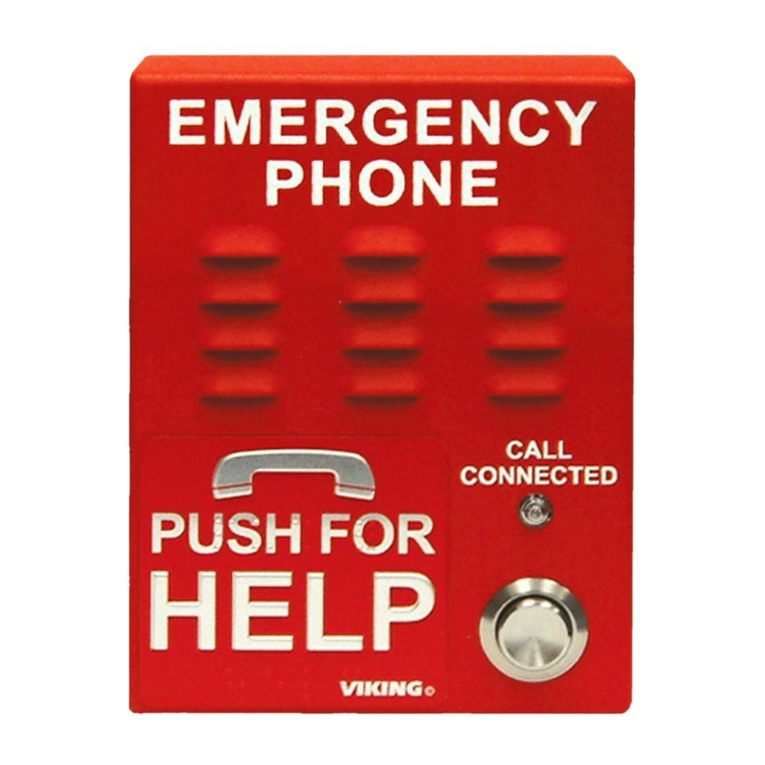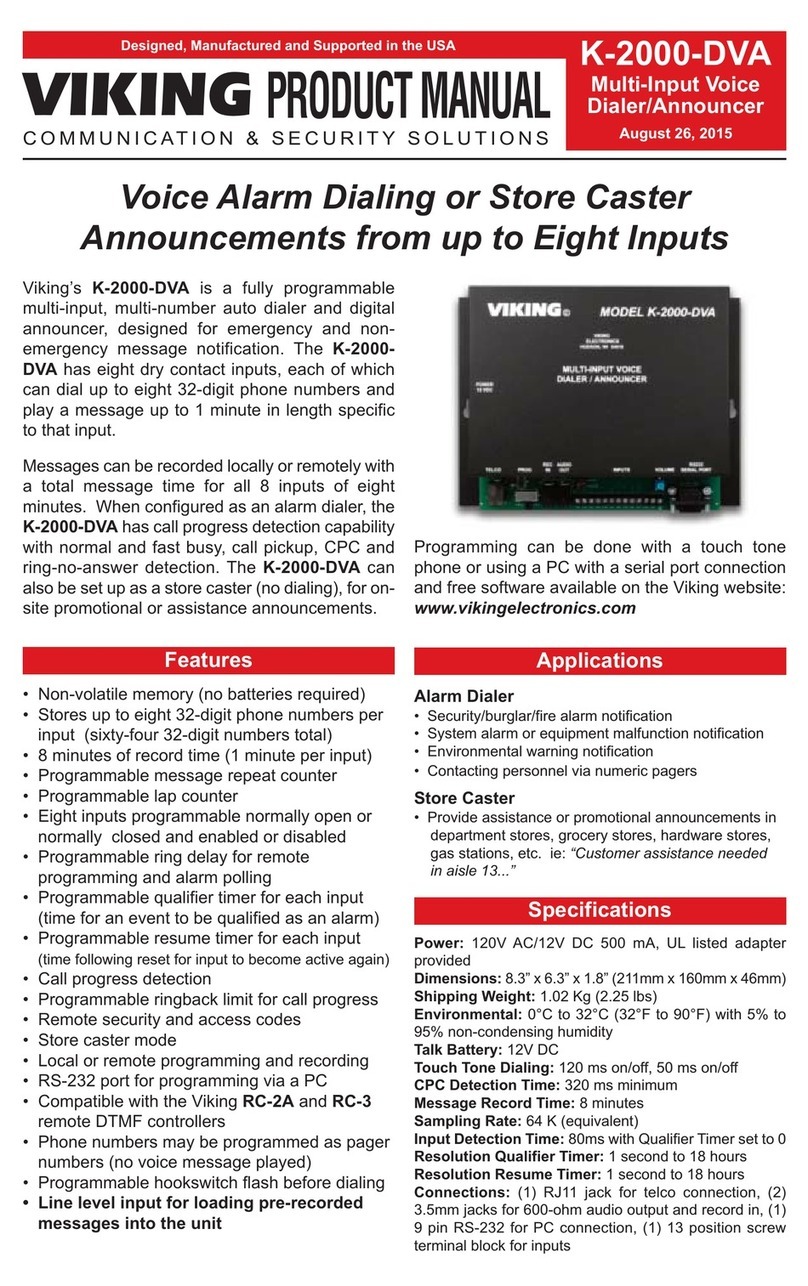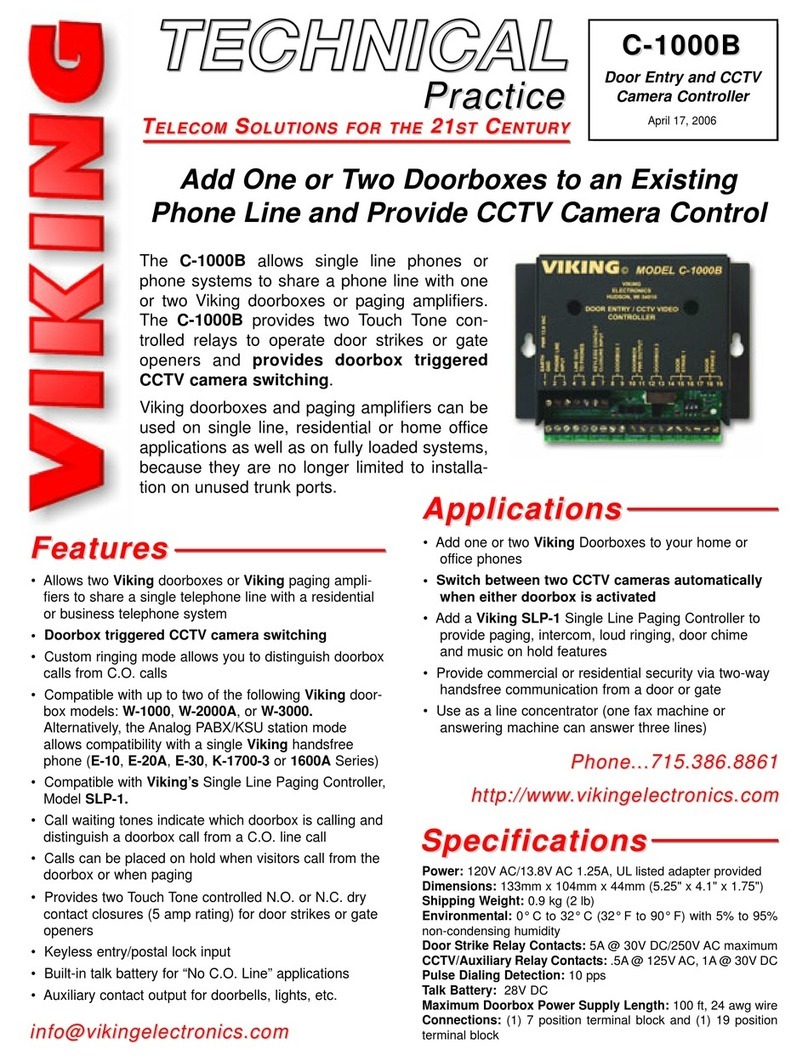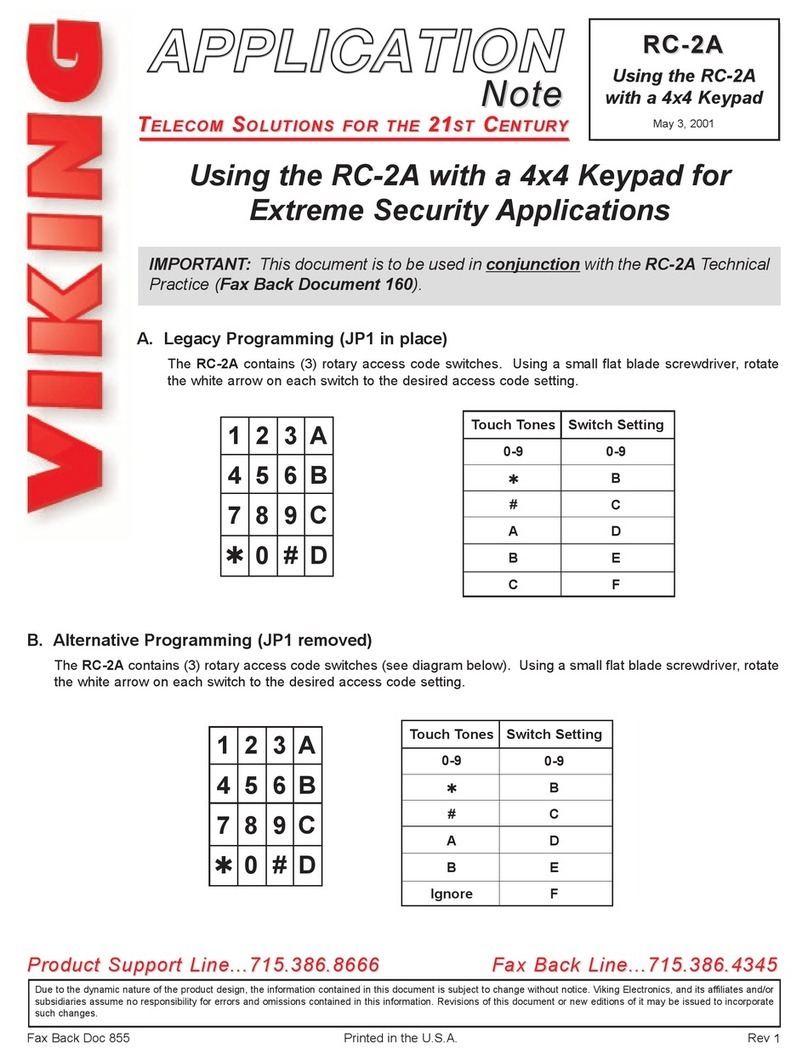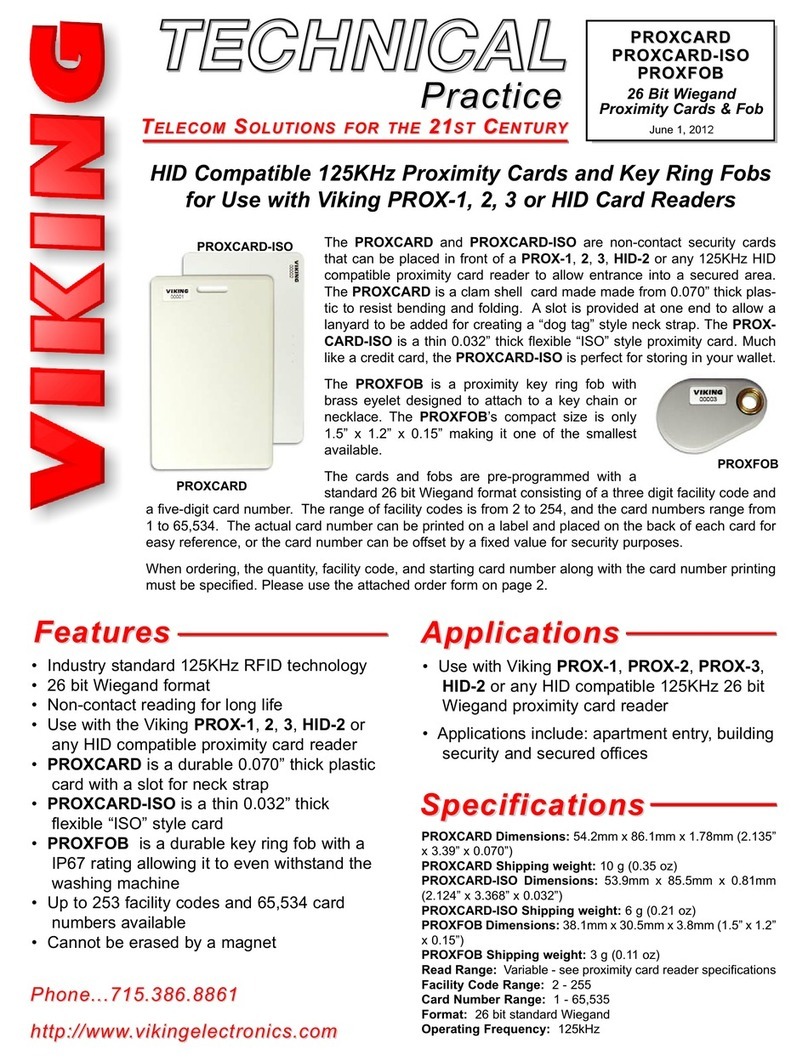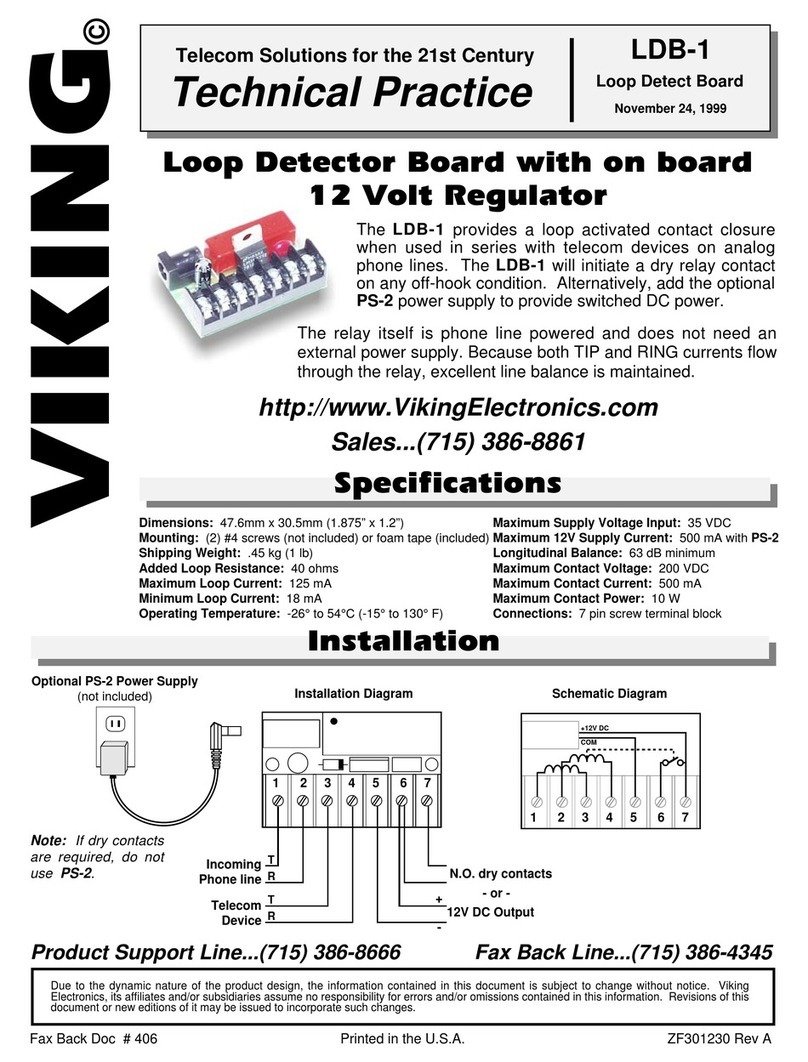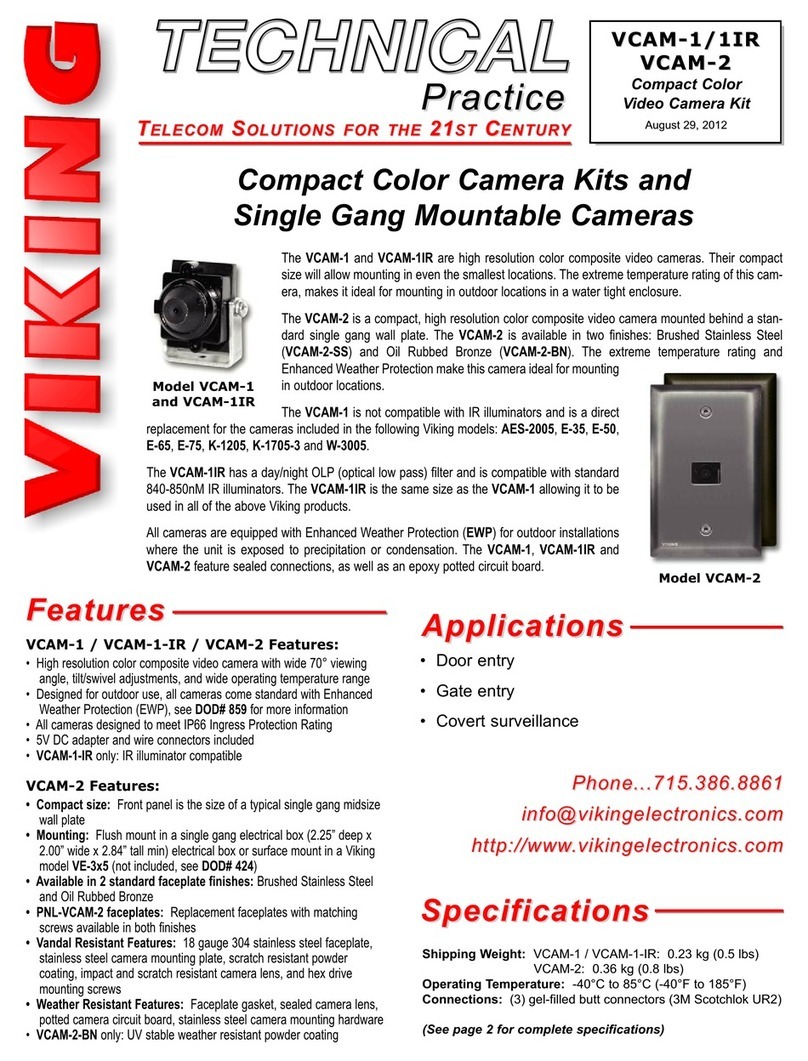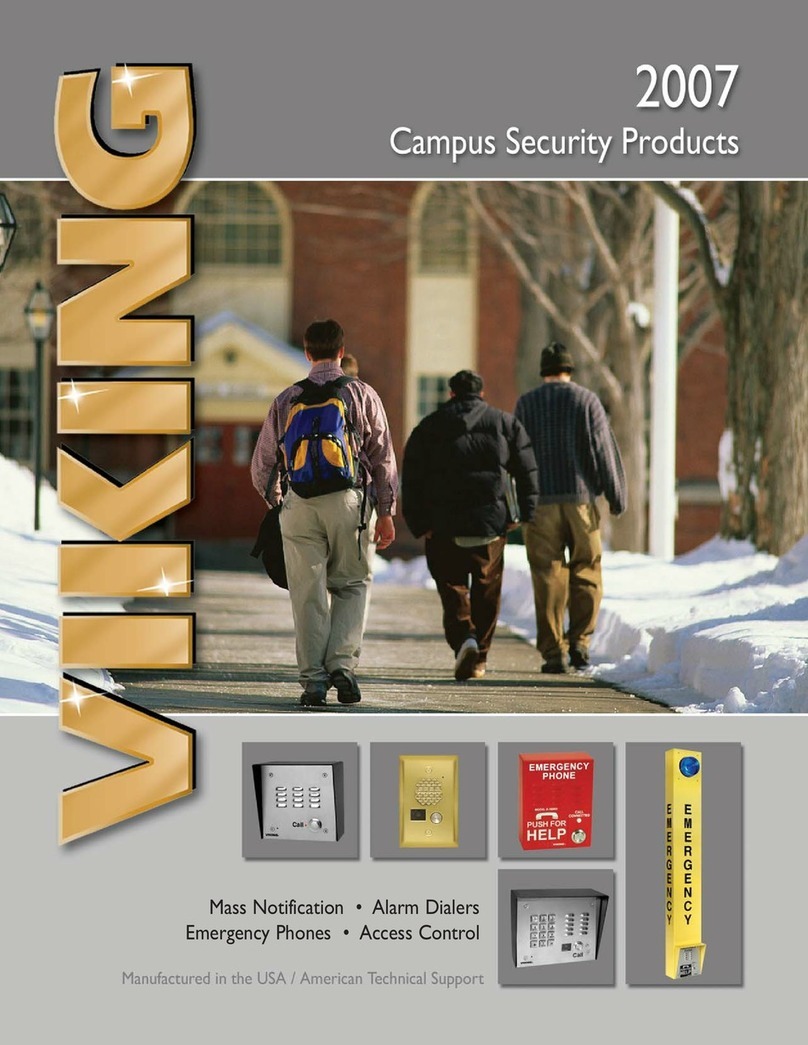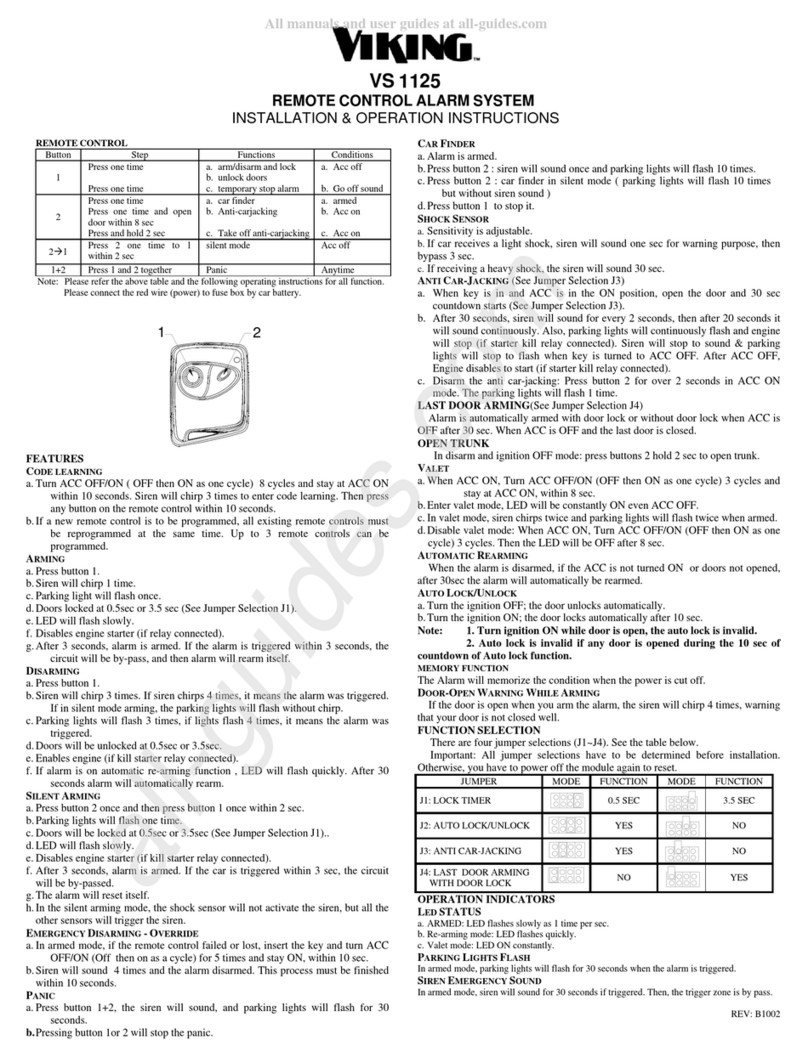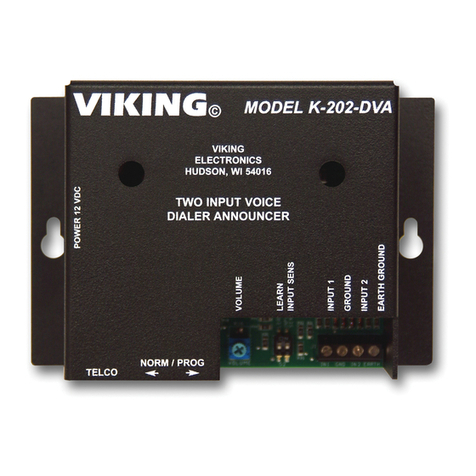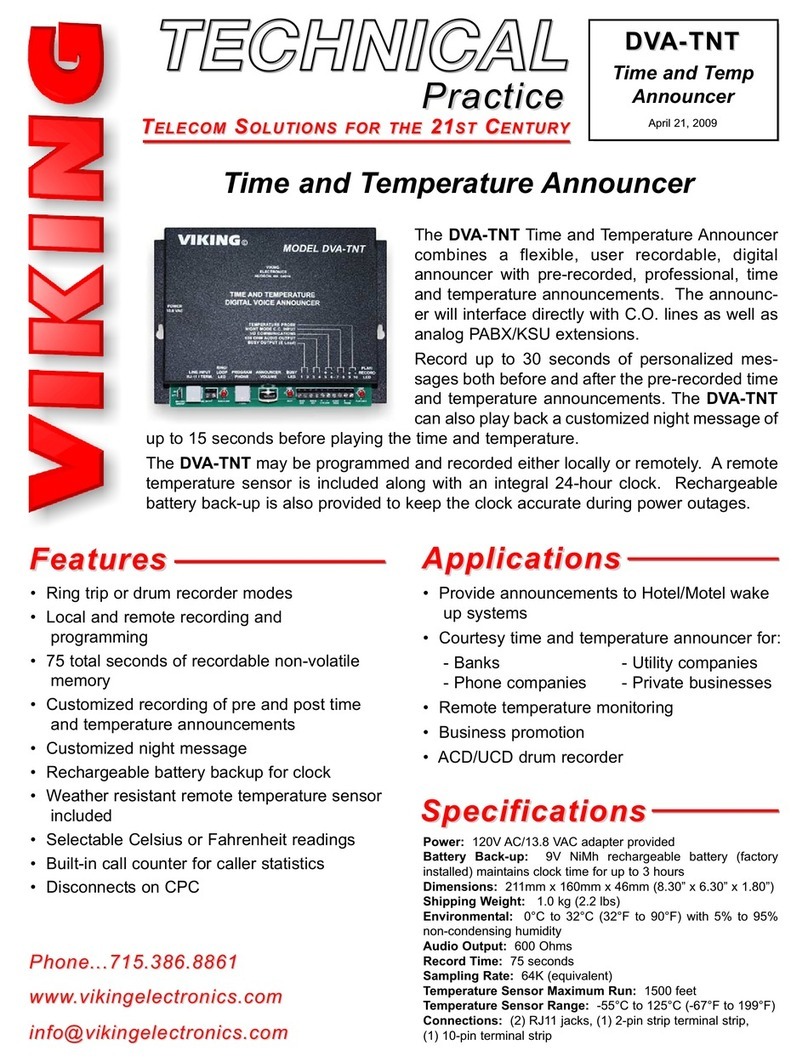
system piping, activating any connected
alarms, but will not discharge from any
closed sprinklers attached to the system
until a sprinkler has operated, as in a
fire. The cycling function of the
Firecycle®III System will not operate in
this condition. All alarms will operate
normally.
Loss of Power Prior to Operation:
If the AC power fails, the Firecycle®III
System continues to operate on the
standby batteries. Should the AC power
and the standby batteries fail prior to the
operation of the system, all alarms will
be lost. As long as air pressure remains
in the system piping, the Pneumatic Ac-
tuator (B.6) will keep the Flow Control
Valve (A.1) from opening. If the system
air pressure is lost, the Flow Control
Valve (A.1) will open, allowing water to
flow into the system piping and be dis-
charged from any open sprinklers. The
cycling function of the system will not op-
erate in this condition, and the system
must be manually shut-off.
Loss of Power During Operation:
If all power fails while the system is flow-
ing water, the normally open Release
Solenoid #2 will fail open. The P.O.R.V.
(B.10) is already pressurized open, con-
tinually venting the priming chamber of
the Flow Control Valve (A.1). The cy-
cling function of the system will not oper-
ate in this condition, and the system
must be manually shut-off.
Manual Operation:
Any time the handle inside Emergency
Release (B.11) is pulled, pressure is re-
leased from the priming chamber faster
than it can be replaced through the prim-
ing line; the Flow Control Valve (A.1) will
open. Water will fill the system piping,
activating any connected alarms, but will
not discharge from any closed sprinklers
attached to the system until a sprinkler
has operated, as in a fire. The cycling
function of the Firecycle®III System will
not operate in this condition, due to the
open Emergency Release (B.11). All
alarms will operate normally. After oper-
ating the Emergency Release (B.11), do
not close the Emergency Release until
the system is ready to be reset.
C. INSTALLATION
Refer to current Viking Technical Data
describing individual components of the
Viking Firecycle®III System. Technical
Data describing the Viking Flow Control
Valve and other system components are
packed with product and in the Viking
Engineering Design Data book.
Also, refer to applicable installation stan-
dards, codes, and Authorities Having
Jurisdiction.
1. The Flow Control Valve (A.1) and
Trim must be installed only in areas
where they will not be subjected to
freezing temperatures or mechanical
damage.
2. All indicating appliances and releas-
ing devices must be compatible and
approved for use with the Firecycle®
III System. Refer to appropriate Fire
Protection Equipment Approval
Guides and current Viking Technical
Data describing individual compo-
nents of the Viking Firecycle®III Sys-
tem.
3. Use only Firecycle®Detectors (E.4)
and Cable (E.5).
D. EMERGENCY
INSTRUCTIONS
(Refer to Figure 1 or 2, Page 425 d.)
Taking System Out of Service:
WARNING: Placing a control valve or
detection system out of service may
eliminate the Fire Protection capabilities
of the system. Prior to proceeding, notify
all Authorities Having Jurisdiction. Con-
sideration should be given to employ-
ment of a Fire Patrol in the affected ar-
eas.
After a fire, verify that the fire is OUT and
that placing the system out of service
has been authorized by the appropriate
Authority Having Jurisdiction.
Sprinkler systems that have been sub-
jected to a fire must be returned to ser-
vice as soon as possible. The entire
system must be inspected for damage
and repaired or replaced as necessary.
1. If All System Components Are
Operational:
A. Open Auxiliary Drain.
B. Silence alarms (optional).
1: To silence electric alarms con-
trolled by Firecycle®III Control
Panel (E.3), open panel and
press “ALARM SILENCE”
2: To silence electric alarms not
controlled by Firecycle®III
Control Panel (E.1), close
Alarm Shut-Off Valve (B.9).
Note: Electric Alarms con-
trolled by a pressure switch in-
stalled in the 1/2" (15 mm) NPT
connection for a
Non-interruptable Alarm Pres-
sure Switch cannot be shut off
until the Flow Control Valve is
reset or taken out of service.
C. To return to service immedi-
ately, (when no maintenance or
repairs are required) :
1: Close System Drain (D.3) if
opened in step 1-A.. If neces-
sary, open System Drain (D.3)
to drain system and/or Test
Valve (B.15) to drain the inlet
chamber of the Flow Control
Valve (A.1).
2. Restore system air pressure.
3: Open Firecycle®III Control
Panel (E.3) and press “RE-
SET”.
4: Open Alarm Shut-Off Valve
(B.9) (If it was closed in step
B-2 above).
5: Verify that all valves are se-
cured in their normal operating
position. (Refer to Figure 1 or
2, Page 425 d.)
2. If it is necessary to remove the
Firecycle®III system from service:
A: Close the Main Water Supply
control Valve (D.1).
B: Close Priming Valve (B.1) (op-
tional). If necessary, open
System Drain (D.3) to drain
system and/or Test Valve
(B.15) to drain the inlet cham-
ber of the Flow Control Valve
(A.1).
C: Disconnect all power sources
to the Firecycle®III Control
Panel prior to performing any
maintenance or repairs to the
detection system (E.4, E.5),
the panel (E.3), solenoid
valves (E.1, E.2), or any elec-
trical component of the sys-
tem.
3. Perform all maintenance procedures
recommended in Firecycle®III
Owner’s Manual and Technical Data
Pages for the individual components
of the system that has operated.
A. Replace any piping, detectors
(E.4), or sections of detection
cable (E.5) that have been
damaged.
Note: The complete system
operation must be tested after
servicing, changing program-
ming, addition or deletion of
system components or after
any modification, repair, or ad-
justment to system hardware
or wiring. All components, cir-
cuits, system operation or soft-
ware functions known to be af-
fected by a change must be
100% tested.
B. Replace any sprinklers and/or
spray nozzles that have been
damaged or exposed to fire
conditions.
4. Restore AC power to Firecycle®III
Control Panel (E.3). Ensure that
standby batteries are charged or
charging.
Always connect and turn on AC
power source prior to connecting the
standby batteries. Connecting the
SYSTEM DATA
Firecycle®III 425 b March 15, 2004
FIRECYCLE®III
CYCLING SINGLE
INTERLOCKED PREACTION
